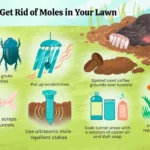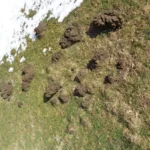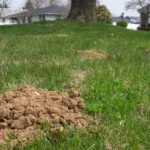As you walk through your yard, you may notice mounds of soil appearing out of nowhere. At first, you may shrug it off. But as days go by, the mounds become more frequent and larger in size. Suddenly, the reality dawns upon you—that you are dealing with a mole problem. Moles are known for damaging lawns and gardens, leaving unsightly tunnels and mounds all over your property. Overcoming this situation can be a daunting task, leaving homeowners perplexed about what to do next. In this article, we will provide you with tips and tricks on how to create an unfavorable habitat for moles and prevent them from damaging your lawn.
Identifying Mole Problems
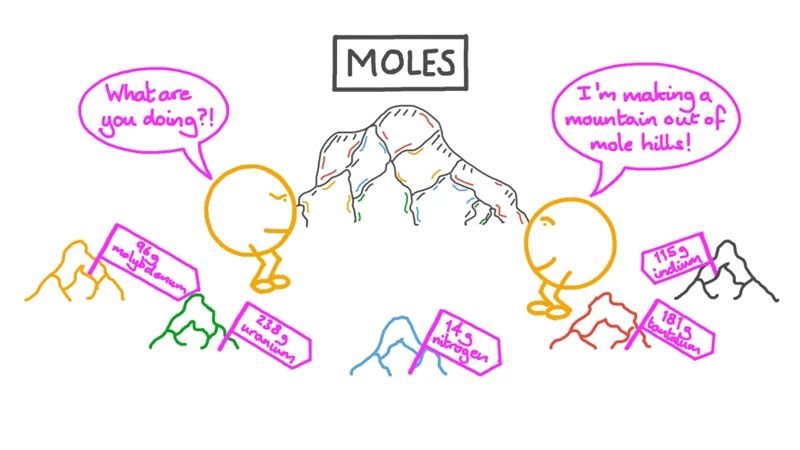
It’s perplexing to discover that you have a mole problem in your yard. These small mammals are known for their habitual digging and tunneling, which can cause damage to your lawn and garden. Identifying the signs of a mole infestation is the first step towards controlling and preventing further damage. Common clues of mole problems include raised ridges or mounds of dirt, damaged roots, and wilted vegetation. Understanding the behavior and habits of moles can also help you in creating an unfavorable habitat. To learn more about mole habits and control strategies, check out /understanding-mole-habits-control/.
Signs of Mole Infestations
One of the challenges in mole control is identifying whether or not you have a mole problem in your yard. Here are some signs of mole infestations that you can look out for:
- Presence of molehills – these are conical mounds of soil that moles push up to the ground surface as they dig their tunnels.
- Wavelike raised ridges on the lawn or garden – since moles create tunnels in the soil as they search for food, the soil over the tunnels can be pushed up, creating raised ridges.
- An abundance of earthworms – earthworms are a favorite food source of moles, so if you have a lot of them in your yard, you may have a mole problem.
- Wilting or yellowing plants – moles may eat the roots of plants or dig up bulbs, which can cause damage or even kill plants.
It is important to address mole infestations as soon as possible, or they can quickly spread throughout your yard, causing significant damage. If you suspect moles are creating tunnels in your yard or garden, it’s important to take action right away. You can learn more about mole tunnels and habits to help with identification.
Benefits of Mole Control
One may wonder why it is necessary to control the mole population in their yard. Well, there are several benefits of mole control that cannot be overlooked.
Firstly, a mole infestation can lead to significant damage to your lawn and garden. Moles have an incredibly high metabolism which makes them require a lot of food. They can consume up to 100% of their body weight each day, which often comes in the form of grubs, ants, and other insects that live in your soil. This means that your lawn can quickly become infested with these pests if moles are present. In turn, the infested lawn can create dead patches and lumps that make it difficult for plants to grow.
As moles tunnel through your soil, they can damage plant roots and bulbs, which can ultimately lead to premature plant death. Hence, mole control is necessary in order to keep your lawn and garden healthy and beautiful.
Secondly, moles can create tripping hazards for homeowners. As they tunnel around your yard, they can create weak points in the ground that are prone to collapse, creating holes that can cause injury to anyone walking across the yard. This can be dangerous, especially for children or the elderly, and can even lead to lawsuits.
Lastly, moles can be destructive to the environment. In their quest for food and shelter, they change the soil structure, leading to erosion and impacting soil quality. This can further degrade the environment and create long-lasting damage.
Mole control is crucial as it helps prevent damage to your lawn, avoid tripping hazards, and protect the environment. There are many strategies available to control moles, ranging from natural remedies to professional services. It’s important to choose the method that works best for your situation. Follow the recommendations provided in this article or consider consulting professional mole control services to help you safely create an unfavorable habitat for moles.
Prevention and Control Tips
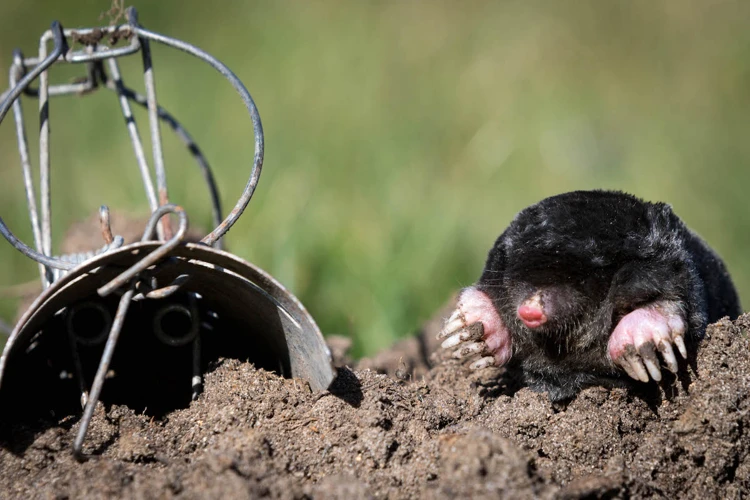
When dealing with moles, prevention and control are key elements to consider in order to create an unfavorable habitat for these pesky critters. Implementing these tips can help you protect your lawn and yard from mole infestations. First, it’s important to identify the mole problem and understand what signs to look for, as well as the benefits of controlling them. Once you have a better understanding of the situation, you can take measures to prevent and control moles using various techniques such as removing their food sources, eliminating their habitats, and even using home remedies. For a more effective and efficient solution, you may also opt for professional mole control services. Let’s explore these prevention and control tips in more detail.
Remove their food sources
One way to control a mole infestation is to remove their food sources. Moles mostly feed on grubs, insects, and earthworms, so reducing the population of these pests can help get rid of moles. Here are some ways to do it:
| Method | Description |
|---|---|
| Use Nematodes | Nematodes are small, parasitic worms that feed on grubs and other pests. Apply nematodes to your lawn regularly to decrease the population of grubs and other insects that moles feed on. This method is completely safe for pets and humans. |
| Use Insecticides | Insecticides are another effective way to eliminate the food sources of moles. Choose an insecticide that is specifically designed to target grubs and other insects that moles feed on. Be sure to follow the instructions carefully when using insecticides to ensure your safety and that of your pets. |
| Remove Plants Attracting Insects | If there are certain plants in your yard that are attracting insects that moles feed on, consider removing them. This can help disrupt the food chain and reduce the population of moles in your yard. Some common plants that attract insects include marigolds, clovers, and asters. |
By eliminating the food sources of moles, you are making your yard a less attractive habitat for them. However, keep in mind that this method alone may not completely rid your yard of moles. Implementing multiple control strategies can increase the chances of effectively getting rid of moles. To learn more on this topic, check out our previous article on soil mole habitation.
Eliminate their habitats
To effectively control moles, it is essential to eliminate their habitats. Moles are burrowing mammals that prefer to live in damp habitats with moist soil. Getting rid of their preferred soil can significantly reduce their presence in your yard. Here are some ways to eliminate their habitats:
1. Improve soil drainage: Moles thrive in moist soil, so improving soil drainage can help reduce their numbers. Aerate the soil, prune back trees and shrubs, and remove thatch buildup to allow better water penetration.
2. Remove weeds and dense vegetation: Moles often build their nests in areas with dense vegetation. Removing weeds, tall grass, and other foliage from your yard can help reduce their habitat.
3. Install barriers: Installing barriers such as mesh, gravel or sheeting is a useful method to eliminate mole habitats. The material should be placed at least two feet below the ground to prevent moles from burrowing underneath it.
4. Keep soil dry: Since moles prefer moist soil, keeping the soil dry can help reduce their presence. Be sure to water your lawn and garden only when necessary, and avoid over watering.
By implementing these tips for eliminating mole habitats, you can make your yard less favorable for moles to live in. For more detailed information on mole removal and control, check out our article “How to Remove Moles from Lawn” or “Mole Behavior Control Strategies“. Additionally, it may be helpful to consider the impact of weather and climate on mole behavior, which can be explored in our article “Weather and Climate’s Impact on Mole Behavior“.
Make your yard less attractive to moles
One effective way to prevent mole infestations is to make your yard less attractive to these creatures. This involves taking a few steps to create an unfavorable habitat for moles. Here are some tips to follow:
- Regularly mow your lawn to keep the grass short. Moles tend to avoid areas with short grass, as it becomes more difficult for them to burrow and feed.
- Avoid overwatering your lawn or garden. Excess water can cause soil to become loose and easy for moles to dig through.
- Limit the use of fertilizers or other soil additives, which can attract earthworms and other prey that moles feed on.
- Consider using plants that moles dislike around the perimeter of your yard. These include daffodils, alliums, and marigolds.
- Install barriers, such as rocks or wire mesh, around areas you want to protect. This can prevent moles from burrowing into flower beds or vegetable gardens.
By following these tips and tricks, you can create an unfavorable habitat for moles in your yard, making it less likely for them to move in and cause damage.
Home remedies for mole control
There are several home remedies that may help in controlling mole infestations in your yard. These remedies are generally safe for you and your children, as well as for your pets. Here are some home remedies you can try to get rid of moles:
- Castor Oil: Mix 1/4 cup of castor oil with 2 tablespoons of dish soap in a gallon of water. Pour this mixture around the entry points of the mole tunnels. The odor of the castor oil will drive the moles away.
- Garlic and Chili: Crush some garlic cloves and chili peppers and mix them with a gallon of water. Pour this solution into the mole tunnels and burrows. The strong odor of this mixture will discourage moles from staying in your yard.
- Cayenne Pepper: Sprinkle cayenne pepper around the mole tunnels and entry points. The strong pungent odor of this pepper will irritate the moles and keep them away from your lawn.
- Smoke Bombs: You can buy smoke bombs from garden centers or online. Light the smoke bomb and put it into a mole burrow. The smoke from the bomb will suffocate the mole and drive it out of the burrow.
However, it’s important to remember that home remedies may not always provide the desired results. In some cases, you may need to seek professional help to completely eliminate the problem.
Professional Mole Control Services
While the prevention and control tips mentioned above can be effective in managing mole problems, they may not always be enough to completely eliminate an infestation. In such cases, it’s best to call in professional pest control services that specialize in mole eradication.
Professional mole control services have the expertise and experience to identify the extent of the problem and take necessary measures to get rid of moles from your property. They use advanced tools, traps, and baits that are not available to regular homeowners. They can also help in preventing future mole infestations by providing customized solutions based on your property’s specific needs.
Another advantage of hiring professional services is that they follow safe and humane practices that cause minimal harm to the environment and other wildlife in your yard. They also ensure that the moles are not simply trapped and released elsewhere, which is illegal and can lead to further spread of the problem.
It’s important to choose a licensed and reputable pest control company for mole control services. Look for companies that have experience in dealing with mole infestations and have positive reviews from previous customers. You may also want to compare prices and services offered by different companies, but keep in mind that the cheapest option may not always be the best.
If prevention and DIY control measures fail to eliminate your mole problem, don’t hesitate to enlist the help of professional pest control services. Their expertise and advanced tools can provide long-term solutions and prevent further damage to your yard.
Conclusion
After implementing the above-mentioned prevention and control tips, you should see a noticeable change in the mole activity in your yard. However, it’s important to remember that moles are persistent creatures and may still find a way back into your yard.
Consistency, patience, and observation are key in keeping moles out of your yard. Regularly check your yard for signs of mole activity and adjust your prevention and control methods as necessary.
While it may be tempting to use harsh chemicals or traps as a quick fix, it’s important to consider the impact they may have on other wildlife and the environment. Home remedies and natural prevention methods can be just as effective and safer for the ecosystem.
If your mole problem persists, consider reaching out to a professional mole control service for assistance. They have the knowledge and tools to efficiently and effectively remove moles from your yard without causing harm to the environment.
In conclusion, moles may be a nuisance, but with proper prevention and control measures, you can create an unfavorable habitat for them in your yard. Be diligent and patient in your efforts, and don’t hesitate to seek assistance from professionals if needed.
Frequently Asked Questions
Can moles cause damage to my yard?
Yes, moles can cause extensive damage to your yard by creating tunnels and molehills.
Are moles harmful to humans?
Moles are not harmful to humans as they do not carry diseases or bite.
What do moles eat?
Moles primarily feed on insects, earthworms, and grubs.
How can I tell if I have a mole problem?
You can tell if you have a mole problem by the presence of raised tunnels and molehills on your lawn.
Are there any benefits to having moles in my yard?
Moles can aerate soil, which can be beneficial for plant growth.
How can I prevent moles from entering my yard?
You can prevent moles from entering your yard by eliminating their food sources and making your yard less attractive to them.
Do sonic mole repellents work?
There is no scientific evidence to support the effectiveness of sonic mole repellents.
Can I trap moles myself?
Yes, you can trap moles yourself, but it requires knowledge and experience to do so safely and effectively.
What is the best time to control mole populations?
The best time to control mole populations is in the spring and fall when moles are most active.
What should I do if I am unable to control mole populations on my own?
If you are unable to control mole populations on your own, you should seek the help of professional mole control services.


